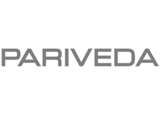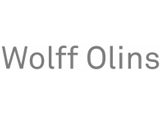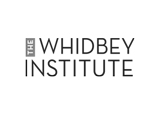Expertise
What is Vertical Development?
Over the past four decades, research has identified vertical development as a critical aspect of how adults learn, grow and mature. This has major implications for ongoing personal and professional growth. Vertical development is different from “horizontal” growth and particularly relevant for leaders.
What is Vertical Development
What is Vertical Development?
Horizontal development is defined as acquiring experience and knowledge, as well as new skills and competencies. While important, horizontal development does not lead to shifts in how one sees the world and engages with its challenges. Vertical development does just that – it fosters the growth of new perspectives and a greater ability to handle difficult problems.
In today’s increasingly complex work and life contexts, vertical development becomes essential. Research over the last four decades has shown that vertical development can be traced as a logical sequence of stages through which leaders can interpret and gain insights about themselves, others and the world around them. And today, fortunately, we can measure how an individual grows through these stages of maturity.
The Leadership Maturity Framework
All growth depends on good theory that is based
on sound evidence and research. VeDA’s
Leadership Maturity Framework defines eight
stages of vertical development based on empirical
evidence gathered since the 1960s. Each stage is
generally more effective, flexible and insightful
than the one before.
The Leadership Maturity Framework
The Leadership Maturity Framework
Our Leadership Maturity Framework helps identify the strengths and vulnerabilities of each stage. It pinpoints the factors that promote or impede growth at each successive stage.
Each successive stage of vertical development is more capable and satisfying as we discern more and can make subtler distinctions. Moving through the stages of development, we gain not only autonomy and freedom, but also increasing tolerance for difference and ambiguity. We experience more flexibility, new skill in interacting with our environment, and an expanded ability to reflect. At the same time, we generally become less defensive. We are simply more open to what is true about ourselves including our vulnerabilities and fears. In the later stages of development, it is easier to understand earlier views of the world. But, climbing up our particular mountain, we cannot imagine what the view from higher up will reveal.
In general, it takes people three to five years to develop from one stage to the next—if they are well supported. Externally, support comes from relationships and the environment. Internally, support comes from ones capacities, traits, and desires. Stages evolve in sequence. Thus, once one has moved through a stage, it remains a part of one’s experience. Leaders will discover that with each new level, they can become more nuanced, integrated, and flexible in their thinking. In other words, leaders become significantly more capable of functioning at optimum levels and with more ease in our ever-more rapidly changing and ambiguous environment. Extensively researched and validated, the LMF also makes subtle and explicit distinctions at the high-end of the developmental trajectory, giving us insight into the attributes of late stages of maturity.
We can predict that people at later stages can deal with greater complexity, are more tolerant of uncertainty, and can more flexibly adapt their behavior to what is needed in real time. Leaders can learn to understand and leverage this understanding of the different stages of development for the benefit of themselves, their peers, their organizations, and their clients.
The MAP — VeDA’s Maturity Profile
VeDA’s Maturity Profile, the MAP, combines the
highly respected Washington University Sentence
Completion Test with Dr. Susanne Cook-Greuter’s
extensive research in adult development. It
submits a definitive map of growth in the life of
an adult and reveals details about leadership
growth potential.
The MAP – VeDA’s Maturity Profile
The MAP—VeDA’s Maturity Profile
The MAP has been tested rigorously since 1966 and has been validated across many cultures and populations. Today the MAP is regarded as the most reliable and cost-effective stage-measure of adult development as a whole.
The MAP instrument, the foundation for our process, uses a proprietary scoring method that relies on extensive scoring manuals. These manuals have been painstakingly built and refined based on more than 450,000 sentence completions.
Our MAP report is individually tailored for each client and provides a personalized developmental summary. It interprets strengths, preoccupations and challenges, and provides actionable recommendations to address underlying stage-related concerns. We believe our MAP offers a one-of-a-kind view that gives empowering feedback with keen insights into the growth trajectory of each participant. It is a highly effective tool in developing self-understanding and increasing the effectiveness of leaders as individuals and professionals. In turn, this also facilitates team and organizational development.
Our Certified Scoring Associates (CSAs) score the assessments using rigorous methods to reduce bias, maintain accuracy, and increase reliability. Like all psychometric methodologies that require constant refinement and improvement, our work demands intense commitment from our scoring associates to maintain standards of excellence and a superior level of practice. Through intensive and collaborative learning on an ongoing basis, our Scoring Associates continue to advance our knowledge and capability in profiling and reporting.
Leadership Maturity Coaching
We use clients’ Maturity Profile to individualize the
coaching that both supports and challenges them
to develop horizontally and vertically. Our process—Leadership Maturity Coaching—applies insights
and information from their profiles to clarify the
developmental path ahead with suggested actions
Leadership Maturity Coaching
Leadership Maturity Coaching
The coach celebrates prevailing strengths and values that will facilitate growth. Our coaching approach enables our clients to work at a deeper level in understanding life and relationship challenges, and understanding these in terms of meaning-making. In the process, they become more self-aware and are better able to navigate the increasing challenges and complexities of their world. The coaching process also supports clients to become more reflective, and to challenge and alter the views or beliefs they begin to see as limiting. Our clients find it revealing and relieving to have an orientation map that tells them where they have come from, where they are, and what might be ahead for them. Underlying our coaching approach is the intensive learning and awareness process each of our coaches has engaged with over time. They are chosen for their track records and, as first-hand observers of their clients’ transformation, they carry a deep personal commitment to our maturity framework. VeDA’s Leadership Maturity Coaches are trained to observe:- • What clients pay attention to and what they do not yet notice
- • How clients describe their experience,
- • The complexity of their reasoning
- • What values they hold dear, and how tightly they hold these values
- • Where they place responsibility and control
- • What time horizons they act from: immediate, medium, long-term
- • How they deal with uncertainty or ambiguity
- • What causes them distress, fear, and concern
- • What coping and defense strategies they use in challenging situations
- • How readily they acknowledge or express mistakes and limitations
- • In sum: how they feel about and respond to self, work, others, in ordinary and exceptional life situations
Using the MAP to Measure ROI
Those who design and implement learning programs for leaders in organizations should be concerned about being able to measure the benefits of their investment. The MAP can provide a picture of what we call Developmental-ROI, with details about the ways a leader has matured after engaging in learning initiatives.
Using the MAP to Measure ROI
Using the MAP to Measure ROI
Measuring Developmental-ROI involves:
- • Administering the MAP before investing in training or coaching in order to assess a leader’s developmental capacity (Pre-MAP).
- • Administering the MAP after the training or coaching investment to assess the developmental shift or impact of the intervention (Post-MAP).
To maintain the integrity of the results, the same rater who assesses the Pre-MAP also scores the Post-MAP. The certified coach uses the Post-MAP to study changes in the client’s responses, and to interpret the developmental movement. The follow-up debrief conversation between client and coach explores the client’s experiences between the two MAPs, and helps the client make sense of those experiences. This has a multiplier effect: clients learn about their own ability to learn and discover patterns that impede their growth. They can now see more clearly where they need to focus going forward, while celebrating where they have arrived.
The Pre/Post MAP program is a powerful benchmark that provides a scientific, interpretive, and granular picture of the developmental movement of an individual or a team following a learning intervention.
For organizations that opt for a cohort-based learning program, we provide a Post-MAP report for the group as a whole. This extremely useful feedback allows designers of learning programs to further tailor them for targeted vertical development.
VeDA is particularly well equipped to deliver this customized, consultative service. For a free consultation or for more information about our D-ROI service, please contact us at map@verticaldevelopment.com
Polarity Wisdom and Stages
Tensions naturally pervade organizational life.
Mature leaders can discern two kinds of tensions:
problems and polarities. Problems can be solved
with “either-or” thinking. However, polarities
(paradoxes or dilemmas) are more complex and
involve interdependent alternatives, requiring
“both-and” thinking.
Polarity Wisdom and Stages
Polarity Wisdom and Stages
All leaders wrestle with the tension between being grounded in reality and pursuing a visionary future. All organizations also grapple with tensions—for example, “should we centralize or decentralize?” Neither of these tensions can be solved by simply picking one alternative and neglecting the other. Leaders farther along the developmental trajectory are better able to see and manage issues that involve interrelated alternatives. Both “poles” of the dilemma carry wisdom, and both are needed for longer-term, viable responses to complex issues.
Significantly, stage development necessarily requires the ability to resolve polarities or dilemmas specific to a particular stage. By coaching through the polarity lens, we support leaders to identify their developmental level-related polarities and how to successfully navigate them. This, then, leads to expanded perspectives and an increased ability to deal with “wicked” problems. The polarity map, principles, and processes developed by Dr. Barry Johnson offer the most thorough methodology available for both identifying polarities and leveraging them to support preferred futures.
At VeDA, we have expanded the polarity lens to describe polarities individuals struggle with at each stage of vertical development—revealed through thousands of MAP responses. We also outline specific polarities in the definition and characteristics of each stage identified in our Leadership Maturity Framework. For example, at the Skill-Centric stage, leaders are defined by what they know. Honing and relying on one’s expertise is necessary for great leadership. At the same time, if leaders are unable to practice “not knowing” (the other pole), they compromise their ability to lead. They lose opportunities for creativity, new learning, and even collaboration with those who bring complementary knowledge.
By learning this expanded approach to navigating stage-related polarities, leaders and organizations can generate more creative and more sustainable solutions for managing change, while simultaneously stepping into greater developmental potential.
OUR PRACTICES
Highly skilled coaches and consultants in our network bring decades of experience using a variety of diverse practices. We use the Leadership Maturity Framework, and the wisdom of polarities, in concert with the MAP to guide development. These “lenses” serve as a meta-framework to suggest detailed, tangible ways to bring about enduring shifts in our clients and their systems. Within this broad methodology, we integrate multiple tools and technologies to generate motivation, clarity, and results for our clients. The following list identifies technologies or psychometric systems we integrate across our coach network to achieve desired outcomes
- Working with polarities
- Clean language
- Emotional intelligence
- 360-degree feedback process
- The Enneagram
- Storytelling
- Systems Theory
- Voice dialogue
- Large-scale change methodology
- Action Reflection Learning (ARL)
- Gendlin Process model
- Constellation work
- Holacratic leadership
- Plus a variety of individual and team assessments








